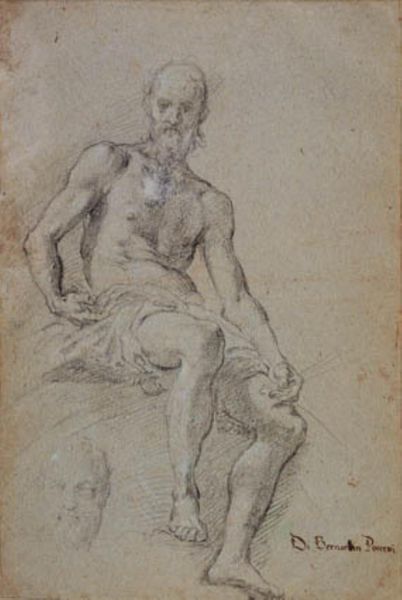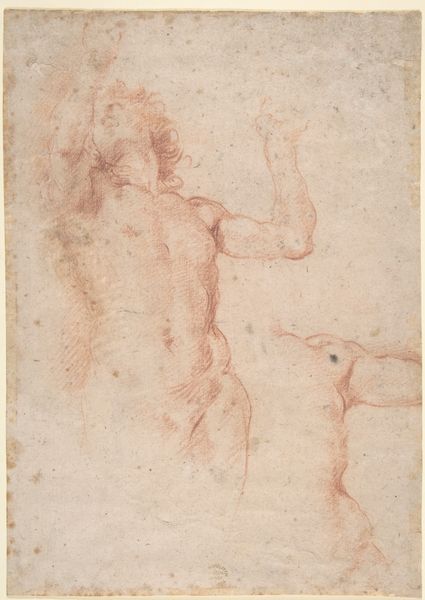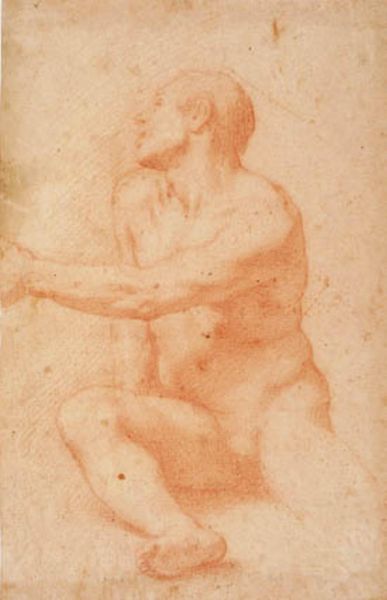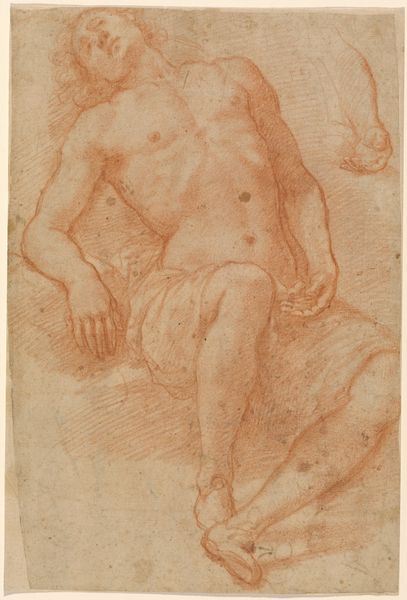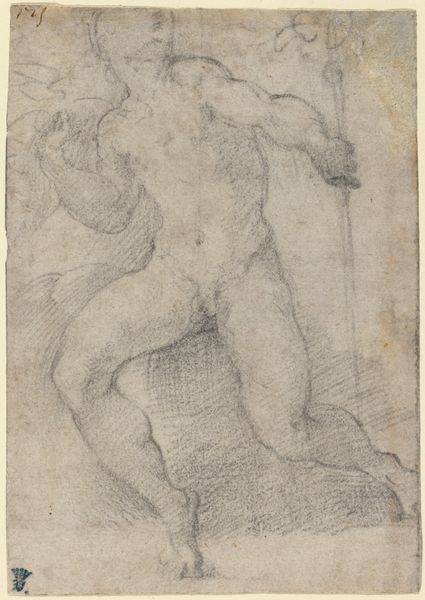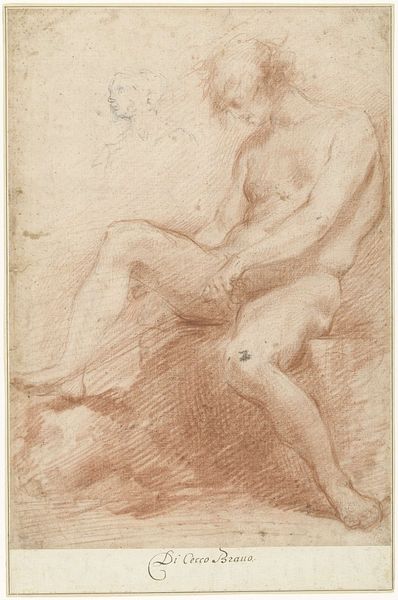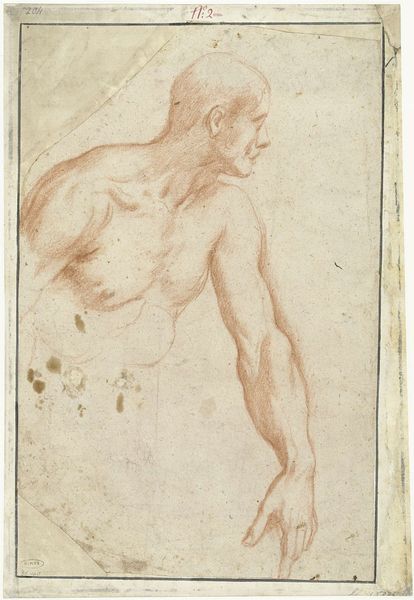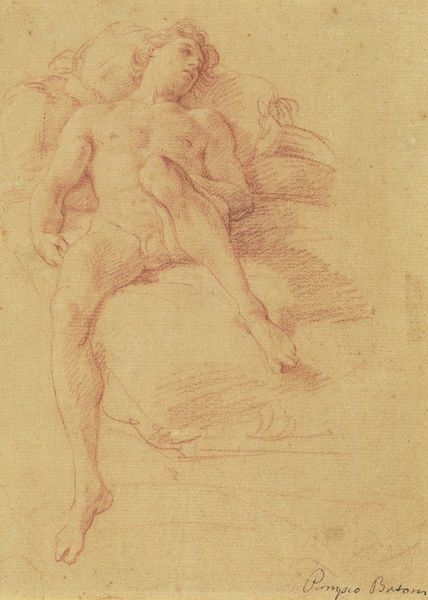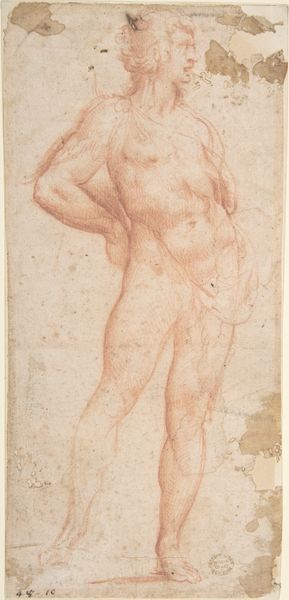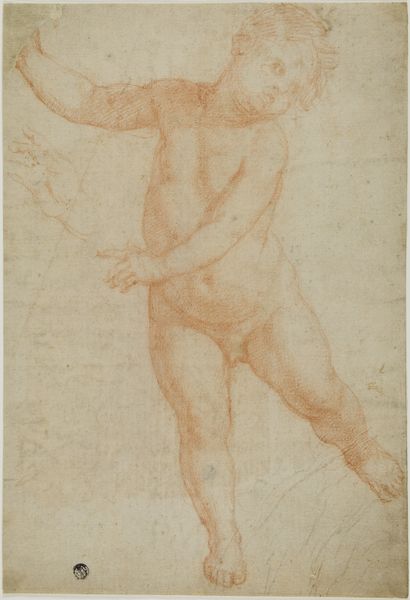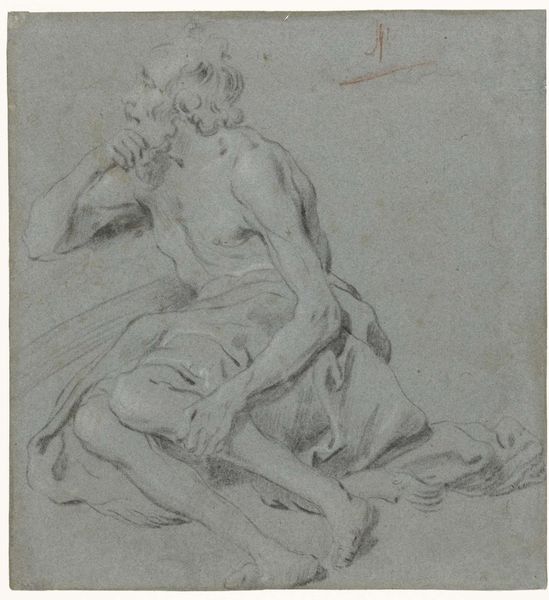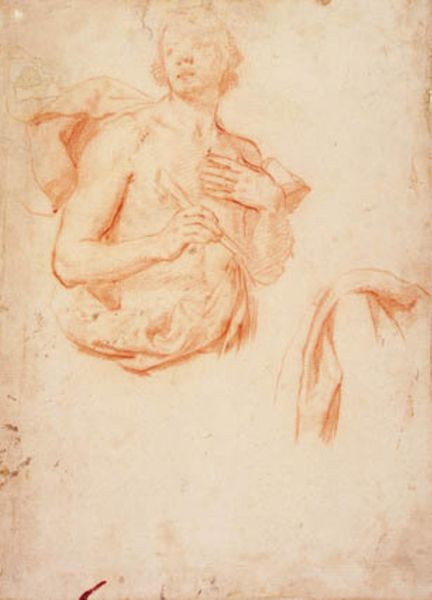
half-length study of bearded nude male figure, and a man and woman with donkey 1615 - 1673
0:00
0:00
drawing, paper, ink
#
portrait
#
drawing
#
water colours
#
baroque
#
figuration
#
paper
#
ink
#
nude
Copyright: Public Domain: Artvee
Curator: Here we have a drawing from between 1615 and 1673, attributed to Salvator Rosa. It’s rendered in ink and watercolours on paper and includes multiple figures. It's titled "half-length study of bearded nude male figure, and a man and woman with donkey." Editor: It looks like a scene caught between worlds, almost like figures emerging from a dream. There's a certain vulnerability in that lone nude figure juxtaposed with what appears to be an arduous journey represented by the donkey. Curator: Rosa, even in a seemingly simple drawing, plays with potent imagery. The nude figure, while presented as a study, echoes classical ideals of the heroic male form, but here, the lack of a defined setting or narrative lends a different tone. There is something incomplete about it, as a symbol. Editor: And incompleteness can be incredibly powerful. The sketchy lines evoke a sense of immediacy and raw emotion, reminding us that even heroes, or idealized figures, are constantly in a process of becoming, always under construction, if you will. I'm intrigued by the contrasting imagery: vulnerability against labour, a nude against a cloaked couple, hinting at different power dynamics, perhaps social hierarchies in 17th-century Italy. Curator: I’d agree that the visual tension here is key. In iconographic terms, the nude form often symbolized truth, purity, or vulnerability before God. Juxtaposing this with a family and their beast of burden, common motifs signifying the everyday struggles of humanity, creates a dynamic and rather disquieting visual paradox. We are prompted to consider human dignity across various planes. Editor: And the fact that these forms are emerging seemingly out of nowhere, creates this very ethereal but present aura of reality. The suggestion of movement, like a frozen moment within a larger unfolding narrative, also tells of broader migration narratives—stories of human displacement and perseverance. I think this seemingly simple sketch manages to evoke layers of interpretation, which make the observer aware of humanity at the different scales. Curator: Absolutely. Rosa seems less concerned with idealised beauty here, more about capturing a fleeting expression of what is means to embody a symbolic load as much as a literal one. This piece functions almost as a symbolic crossroads. Editor: Yes, there is the idea of crossing that line: between private and public life, strength and vulnerability, idealized form and common experience. I am left pondering the various burdens humans carry through life.
Comments
No comments
Be the first to comment and join the conversation on the ultimate creative platform.
